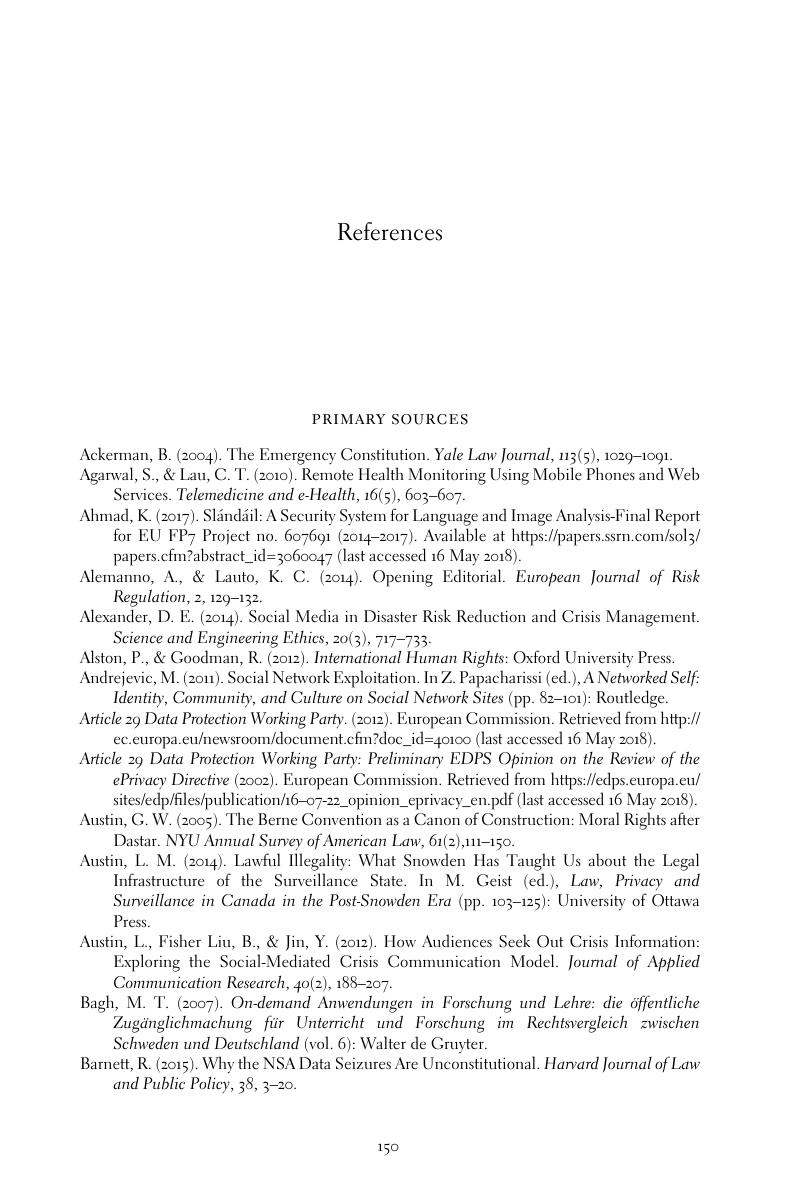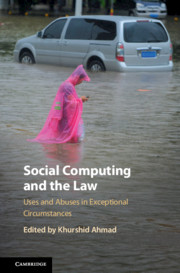Book contents
- Social Computing and the Law
- Social Computing and the Law
- Copyright page
- Contents
- Figures
- Contributors
- Foreword
- Acknowledgements
- Abbreviations
- 1 Introduction
- 2 Social Computing Systems and Ethical Considerations
- 3 Internet Laws
- 4 Copyright Law and Data Protection Law
- 5 EU Human Rights Framework
- 6 Conclusion
- Book part
- References
- Index
- References
References
Published online by Cambridge University Press: 28 September 2018
- Social Computing and the Law
- Social Computing and the Law
- Copyright page
- Contents
- Figures
- Contributors
- Foreword
- Acknowledgements
- Abbreviations
- 1 Introduction
- 2 Social Computing Systems and Ethical Considerations
- 3 Internet Laws
- 4 Copyright Law and Data Protection Law
- 5 EU Human Rights Framework
- 6 Conclusion
- Book part
- References
- Index
- References
Summary

- Type
- Chapter
- Information
- Social Computing and the LawUses and Abuses in Exceptional Circumstances, pp. 150 - 162Publisher: Cambridge University PressPrint publication year: 2018



